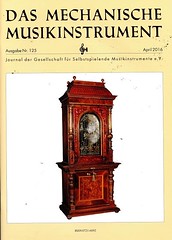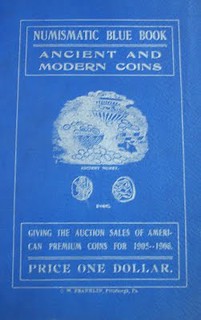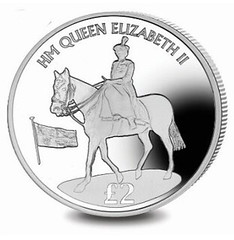
PREV ARTICLE
NEXT ARTICLE
FULL ISSUE
PREV FULL ISSUE
NOTES FROM E-SYLUM READERS: MAY 1, 2016
John Lupia should be pleased to know his copy of C.W. Franklin's "Numismatic Blue Book" is not the only one. I have a copy that I got from an August 31, 1996 Money Tree sale. It has a stamp on the inside cover page of "Aug 19 1907, The Ohio National Bank, Columbus, Ohio, L.F. Kiesewetter, Cahsier." Nice to see it was actually used by a Bank in its day.
Thanks! I don't think I've seen one of these before; at least, I'm pretty sure I don't have one in my library or ephemera
collection. Interesting little item, and definitely rare today. -Editor
To read the earlier E-Sylum article, see:
On Storing Numismatic Book Jackets
Regarding the subject of numismatic book jackets, I always store mine separately inside boxes. I know that they'll get shredded with the frequent use many of my books receive. Though the books may become worn, they'll look all dressed up when the time comes to sell my library, as the dust jackets will remain Near Mint. This practice has backfired on me a few times, as I sometimes sell older editions of books no longer needed and forget that I have their dust jackets tucked away. A few years ago I took an inventory and found about half a dozen for which I no longer owned the books. I listed these as a single lot on eBay, but it took a long time for them to sell. They were mostly for hardbound auction catalogs, and I'd simply forgotten that these had been issued with dust jackets when I consigned the catalogs to one of our book dealer friends.  That's why I like the Brodart dust jacket covers, despite the work involved in putting them on. Shown here is probably my favorite
numismatic dust jacket, a very rare one for Carothers'Fractional Money. That's why I like the Brodart dust jacket covers, despite the work involved in putting them on. Shown here is probably my favorite
numismatic dust jacket, a very rare one for Carothers'Fractional Money.
I hope we don't someday have a similar problem with our daughter's American Girl dolls. Last night I boxed up several empty doll boxes destined for our attic. Someday the dolls can be reunited with their original boxes if only we remember we still have them. -Editor To read the earlier E-Sylum articles, see:
Coins Delisted From the Redbook
The Good Samaritan Shilling is not the only "coin" to be delisted from the Redbook. The "Blake & Co. $20" associated with John Ford has gone down the memory hole, along with other questionable Western items associated with him. Back in 1974 while I was working at Coin World, I saw a letter addressed by Mr. Ford to the Editor of the Numismatic Scrapbook Magazine. In the letter Mr. Ford assured the Editor that various items listed in the Redbook in the 1960's had been removed from the Redbook "due to lack of space." Mr. Bressett assures me that this was not the case.
I knew one of our sharp-eyed readers would catch that. A number of pieces have been delisted over the years, as Tom rightly points out.
Thanks. -Editor
To read the earlier E-Sylum article, see:
Numismatic Treasures from World Trade Center Attack
A fascinating article would be what numismatic treasures were incinerated when the Twin Towers collapsed. Have you ever seen anything reported about that? I'm sure there must have been "oodles" of bullion and gemstones too
Well, there was some bullion recovered and turned into souvenir "coins" That's the only (halfway) numismatic connection I
recall being discussed. Do readers know of any others? -Editor
To read the earlier E-Sylum articles, see:
The Queen Still Rides at 90
At 90 the Queen still rides and still does so without a helmet as she has done all her life. She had her first riding lesson at age 3 and was given her first pony, a Shetland mare, by grandfather King George V when she turned 4. The coin shows her riding side-saddle - as was required by a woman. As a top rider she loathes doing so. Most of her family are serious riders. It is part and parcel of being a British royal. Her daughter of course has ridden in the Olympics.
OK, that makes more sense. I had no idea that the Queen still rides. God bless her. -Editor
To read the earlier E-Sylum article, see:
Mechanical Musical Instrument Award for Dave Bowers
 
On another topic, this week I learned congratulations are due to author Q. David Bowers. One of his several non-numismatic interests is
mechanical musical instruments, and the April 2016 issue of the German publication Das Mechanische Musikinstrument ran a profile
of him and his August 25, 2015 nomination as an honorary member of the Gesellschaft fur Selbstspielende Musikinstrumente E.V., having
"earned special merits in the field of maintenance, care and research for the cultural heritage of Mechanical Music."
Dave's 1,000+ page book, Encyclopedia of Automatic Musical Instruments, was released in 1972 and has sold over 20,000 copies worldwide. Some of his research was done in West Germany and behind the Iron Curtain (at the time) with special permission from the the East German government. He was co-owner of a museum in Copenhagen at the time. Congratulations, Dave! -Editor Prehistoric Email
The Major Eras of Numismatic Research item brought back many OLD memories for me. A couple of weeks after a briefing at SOG Studies & Operations Group headquarters (it was a weak cover name for Special Operations Group) in late July 1970 in Saigon, I suddenly received orders to an intelligence unit in Germany. I arrived in Heidelberg in August 1970 and was surprised to see some Digital Equipment Corp. (DEC) taking over part of the computer room for an IBM 360-50. What was it doing here? As the new Operations NCOIC, I should know about everything in my area of responsibilities, so I walked up to the senior operator on duty and asked him to explain what was going on.
We only used dummy information in the tests. Anyone and everyone with the capability of tapping into our signal could read everything because those were the days before encryption for this new type of communications. So we ended the test; the equipment was returned to ARPANET; and we went back to using couriers to get bulk intelligence back to the intelligence agencies back in the USA. I remember back in the 1980s and 1990s, I would receive surveys asking me when I first used the Internet, when I sent my first email, etc., etc. When I replied that it was in August 1970, they would contact me and tell me that I had incorrectly typed in the wrong year. I would explain the above to them and they would then accept it, but my entry was never used because the published results was always many years after my date! Now I correspond via emails with almost 1,200 different numismatists and those in related fields worldwide, and over 800 more via Facebook! The world has really changed!!!
And I thought I was an early adopter - I began using email as a student at the University of Pittsburgh (and later Bell Laboratories) in
the early 1980s. It took until 1996 for much of the rest of the world to catch on. -Editor
To read the earlier E-Sylum article, see:

Wayne Homren, Editor The Numismatic Bibliomania Society is a non-profit organization promoting numismatic literature. See our web site at coinbooks.org. To submit items for publication in The E-Sylum, write to the Editor at this address: whomren@gmail.com To subscribe go to: https://my.binhost.com/lists/listinfo/esylum All Rights Reserved. NBS Home Page Contact the NBS webmaster 
|


